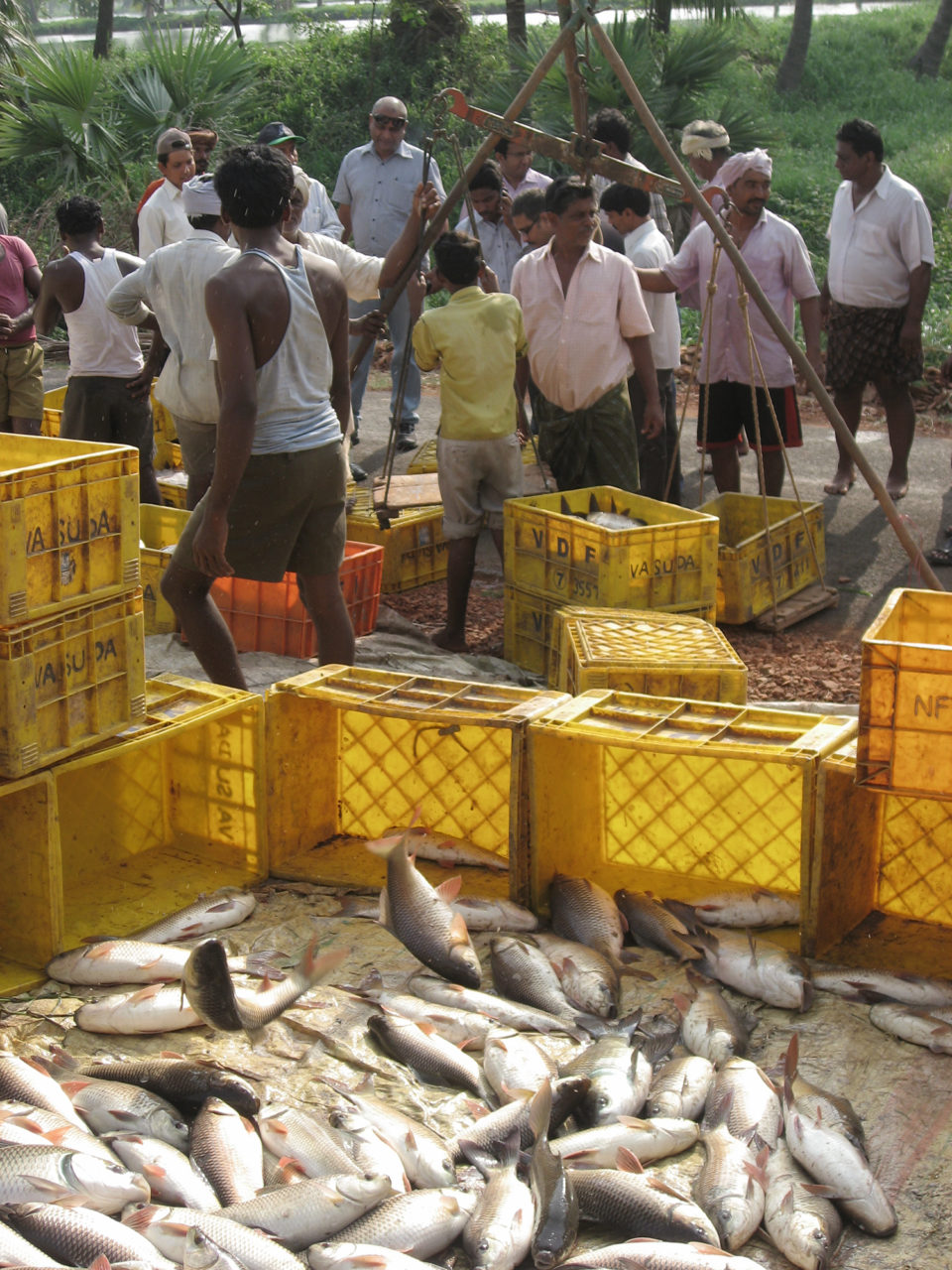
With one million species currently at risk of extinction, the state of global biodiversity loss spells trouble for nature and economies.
The impact of losing bees and other wild pollinators, fisheries and forestry – just a fraction of natural resources at risk – could reduce global GDP by an estimated US$2.7 trillion annually by 2030, according to World Bank simulations.
Kicking off the 7th BioTrade Congress in Geneva, UNCTAD and partners gave a renewed push for stronger trade policies and governance to help tackle the biodiversity crisis.
“Let us trade, yes, but let us trade in a way that enriches our forests, revitalises our oceans and purifies our air,” UNCTAD Secretary-General Rebeca Grynspan said as she opened the meeting on 25 March.
“Let us ‘BioTrade’, with the right support for that to happen,” the secretary-general added.
Why ‘BioTrade’ matters
Valued at US$3.7 trillion, products with a biological origin represented 17 per cent of global exports in 2021, according to the Trade and Biodiversity (TraBio) statistical tool, UNCTAD’s database that measures the international trade of biodiversity-based products.
The economic stakes are even higher for low-income economies, with the share often surpassing 40 per cent of their exports during the past decade.
Since launching the BioTrade Initiative in 1996, UNCTAD has supported more than 80 countries to promote trade in line with environmental, social and economic criteria.
The initiative provides a set of guidelines to bolster sustainable development in its three dimensions across the entire value chain.
These entail a dual focus on people and biodiversity, spotlighting core elements such as conservation, sustainable use, the fair and equitable sharing of benefits, and community empowerment.
Equally important, meeting participants said, are the need for collaborative action, the promotion of sustainable livelihoods and legal compliance.
“We need to mobilize stakeholders at different levels and move the needle on reversing trends that are eroding the very basis of our human existence”, said Monica Rubiolo, head of trade promotion at the Swiss State Secretariat for Economic Affairs (SECO), which has supported the BioTrade initiative for almost two decades.
Win-win for people, planet and economies
Biodiversity is the natural capital base for a sustainable economy. By aligning with the BioTrade principles and criteria, developing countries can diversify exports, conserve biodiversity and improve the livelihoods of local communities.
Take South Africa for example, where efforts to implement the initiative have created over 3,700 jobs, boosted local sales by 51 per cent, and increased export sales by 178 per cent.
In Peru, trade of native superfoods with high nutrition, including quinoa and maca, generate around US$500 million annually.
Additionally, Indonesia saw exports of biodiversity-based products soar by a third in 2021 alone, representing more than 36 per cent of the country’s total exports, and close to 10 per cent of its GDP.
How BioTrade Congress makes a difference
The congress series, first created in 2012, helps mainstream biodiversity into global trade discussions among governments, businesses, researchers and civil society representatives.
The meeting is also part of wider activities towards the 16th meeting of the Conference of the Parties to the UN Convention on Biological Diversity, as well as UNCTAD’s 60th anniversary (2024) and its 16th quadrennial conference, set for 2025.
“The Bio Trade Congress reminds us of the importance of putting people, societies and the environment before capital, by looking more closely at social and solidarity economy models to advance sustainable livelihoods,” said Chantal Line Carpentier, head of trade, environment, climate and sustainable development at UNCTAD.
Deliberations from the congress will support the implementation of the Sustainable Development Goals, and the landmark Kunming-Montreal Global Biodiversity Framework, aimed at halting and reversing biodiversity loss by 2030.
SDGs, Targets, and Indicators in the Article
1. Which SDGs are addressed or connected to the issues highlighted in the article?
- SDG 15: Life on Land
- SDG 8: Decent Work and Economic Growth
- SDG 12: Responsible Consumption and Production
2. What specific targets under those SDGs can be identified based on the article’s content?
- SDG 15.5: Take urgent and significant action to reduce the degradation of natural habitats, halt the loss of biodiversity, and protect and prevent the extinction of threatened species.
- SDG 8.3: Promote development-oriented policies that support productive activities, decent job creation, entrepreneurship, creativity, and innovation.
- SDG 12.2: By 2030, achieve the sustainable management and efficient use of natural resources.
3. Are there any indicators mentioned or implied in the article that can be used to measure progress towards the identified targets?
- Indicator for SDG 15.5: Extent of protected areas in relation to terrestrial areas.
- Indicator for SDG 8.3: Proportion of informal employment in non-agriculture employment.
- Indicator for SDG 12.2: Domestic material consumption per capita.
Table: SDGs, Targets, and Indicators
| SDGs | Targets | Indicators |
|---|---|---|
| SDG 15: Life on Land | Target 15.5: Take urgent and significant action to reduce the degradation of natural habitats, halt the loss of biodiversity, and protect and prevent the extinction of threatened species. | Extent of protected areas in relation to terrestrial areas. |
| SDG 8: Decent Work and Economic Growth | Target 8.3: Promote development-oriented policies that support productive activities, decent job creation, entrepreneurship, creativity, and innovation. | Proportion of informal employment in non-agriculture employment. |
| SDG 12: Responsible Consumption and Production | Target 12.2: By 2030, achieve the sustainable management and efficient use of natural resources. | Domestic material consumption per capita. |
Explanation:
The article discusses the issues of biodiversity loss and the need for stronger trade policies and governance to tackle the biodiversity crisis. These issues are connected to several Sustainable Development Goals (SDGs).
SDG 15: Life on Land addresses the loss of biodiversity and the degradation of natural habitats. The target mentioned in the article is Target 15.5, which calls for urgent action to reduce habitat degradation, halt biodiversity loss, and prevent species extinction. The indicator for this target is the extent of protected areas in relation to terrestrial areas.
SDG 8: Decent Work and Economic Growth is relevant because it highlights the economic impact of biodiversity loss. The target mentioned in the article is Target 8.3, which promotes development-oriented policies that support job creation and entrepreneurship. The indicator for this target is the proportion of informal employment in non-agriculture employment.
SDG 12: Responsible Consumption and Production is connected to the article’s content as it emphasizes the need for sustainable management and efficient use of natural resources. The target mentioned in the article is Target 12.2, which aims to achieve sustainable resource management by 2030. The indicator for this target is domestic material consumption per capita.
Behold! This splendid article springs forth from the wellspring of knowledge, shaped by a wondrous proprietary AI technology that delved into a vast ocean of data, illuminating the path towards the Sustainable Development Goals. Remember that all rights are reserved by SDG Investors LLC, empowering us to champion progress together.
Source: eco-business.com

Join us, as fellow seekers of change, on a transformative journey at https://sdgtalks.ai/welcome, where you can become a member and actively contribute to shaping a brighter future.






